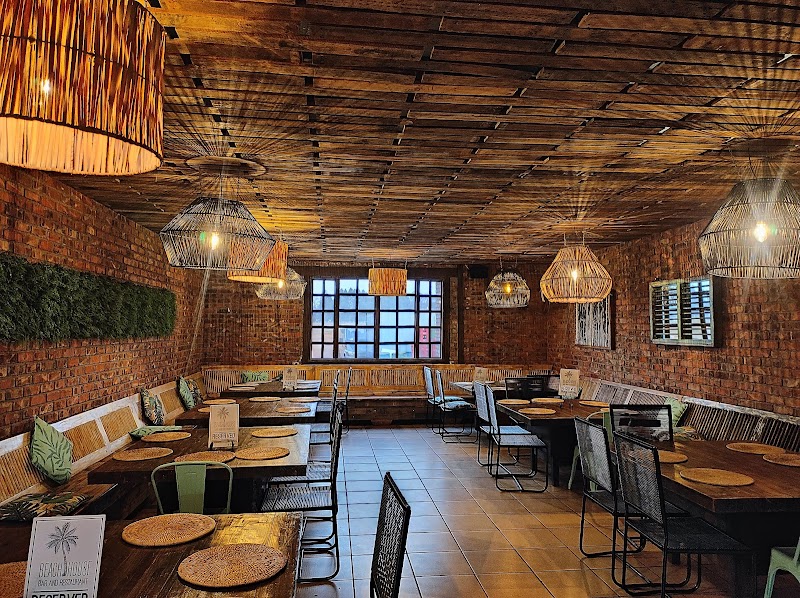
Harare Agricultural Show: A Practical Guide to Zimbabwe’s Vibrant Farming Festival
Experience Zimbabwe’s agricultural heart at the Harare Agricultural Show—a bustling showcase of farming, livestock, and culture in the capital's vibrant showgrounds. Discover practical tips and key highlights to make the most of this lively festival rooted in rural innovation and tradition.
Arrive Early to Beat the Heat
The Showgrounds get crowded and hot by midday; start your visit early to enjoy cooler temperatures and less congested pathways.
Wear Comfortable Footwear
The expansive site requires extensive walking on uneven, dusty terrain, so sturdy shoes will keep your feet protected and comfortable.
Stay Hydrated
Carry a refillable water bottle as shade is limited and the sun can quickly sap your energy over the long day.
Plan for Cash Payments
Many vendors and attractions operate on cash-only transactions, so bring enough local currency to avoid frustration.
Harare Agricultural Show: A Practical Guide to Zimbabwe’s Vibrant Farming Festival
Each year, Harare bursts into life with the Agricultural Show, Zimbabwe’s premier farming showcase held at the Showgrounds in the heart of the capital. This event stands firm as a dynamic hub where rural tradition and urban energy collide, offering visitors an unparalleled experience of the country’s agricultural spirit and innovation. The Show stretches over several days, packed with livestock parades, machinery exhibits, food stalls, and cultural performances—each element fiercely representing the backbone of Zimbabwe’s economy and culture.
Plan your visit with purpose: the Showgrounds cover a sprawling 60 hectares, demanding comfortable walking shoes to navigate its dusty track lanes and expansive display areas. Expect a crowd that pulsates with excitement, mixing local farmers, city dwellers, and curious travelers drawn to the vibrant blend of business and celebration. Early arrival is wise to avoid peak midday sun and ensure you catch the livestock judging and live demonstrations, where animals almost seem to hold court, commanding respect as they move with confident poise.
The showground’s tactile appeal lies as much in its sights and sounds as in its practical insights. Rows of tractors hum quietly, daring onlookers to envision the work behind Zimbabwe’s fields, while stalls brim with seeds and fertilizers—subtle reminders of agriculture’s intricate challenges. Food markets offer hearty, authentic fare, inviting you to fuel up before exploring craft villages where artisans blend tradition and innovation.
If you’re gearing up for this event, hydration is non-negotiable: the Zimbabwean sun presses down unapologetically. Carry a water bottle and wear a wide-brimmed hat for shade during your wanderings. For families, there’s plenty to keep younger adventurers engaged—from pony rides to petting corners—ensuring that a day here is full but manageable.
Beyond the practical, the Show is an invitation to see Zimbabwe’s rural heartbeat, gallantly alive amid the capital’s fast pace. It's an open, social experience merging commerce, culture, and rural resilience. Whether you’re a visitor seeking insight or a local ready to celebrate progress, the Harare Agricultural Show offers a straightforward yet spirited engagement with a country fierce in its agricultural heritage.
Remember, the Show is not just an event; it’s a hands-on lesson in adaptability and innovation, grounded in the real and raw. To engage fully, come ready to walk, learn, and listen to the land and its people, each demanding acknowledgment in their own right.
Nearby Trips
All Adventures
Boat Charters
Water Activities
Adventures near Harare, Zimbabwe
Discover the unique and memorable adventures that make Harare, Zimbabwe special.
Frequently Asked Questions
When exactly is the Harare Agricultural Show held?
The Show typically occurs annually in late August or early September, coinciding with the end of the dry season to maximize outdoor comfort and agricultural displays.
Is the Show kid-friendly and suitable for families?
Yes, the Show offers multiple family-friendly activities, including petting zoos, pony rides, and interactive exhibitions that engage children without overwhelming them.
Can I purchase local agricultural products directly at the Show?
Absolutely. Numerous vendors sell seeds, fresh produce, artisan foods, and handcrafted goods, providing an authentic shopping experience rooted in Zimbabwean farming traditions.
Are there any lesser-known areas or viewpoints within the Showgrounds worth exploring?
The lesser-visited craft and innovation pavilions located on the southern edge of the grounds often reveal unique entrepreneurial efforts and provide quieter spots away from the main crowds.
What types of wildlife or farm animals can I expect to see?
Livestock dominates the scene—from prized cattle and goats to indigenous chickens—each breed exhibiting its own story and role in Zimbabwean agriculture.
How does the Show contribute to environmental awareness?
The event includes dedicated segments on sustainable farming practices and water conservation, pushing visitors to consider a balance between productivity and ecological stewardship.
Recommended Gear
Comfortable Walking Shoes
Durable shoes protect your feet and provide support on uneven, often dusty paths.
Wide-Brimmed Hat
Protects your face and neck from the strong Zimbabwean sun during outdoor exhibits.
Refillable Water Bottle
Keeps you hydrated under the often hot, dry conditions of the Showgrounds.
Light Layered Clothing
Comfortable layered garments allow for adjustability during cool mornings and warm afternoons.
Local Insights
Hidden Gems
- "Southern innovation pavilion showcasing cutting-edge agricultural technology adapted for Zimbabwe's climate."
- "Quiet garden area near the poultry exhibition, perfect for a moment of calm amid the bustle."
Wildlife
- "Indigenous goat breeds known for drought resistance."
- "Various bird species attracted to the grazing fields surrounding the Showgrounds."
History
"Inaugurated in 1910, the Harare Agricultural Show has served as a pivotal platform for Zimbabwean farmers, evolving from a small livestock exhibition into a comprehensive showcase of agricultural advancement and culture."
